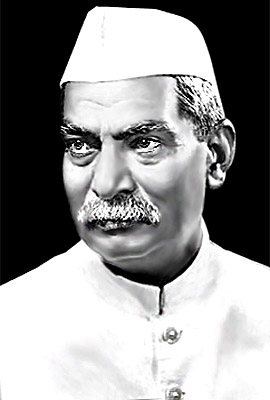 Siwan derived its name from "Shiva Man", a Bandh Raja whose heirs ruled this district until the arrival of Babur Maharajganj, which is another subdivision of Siwan district, may have found its name from the seat of the Maharaja there. A statue of Lord Vishnu has also been found in Village Bherbania from underneath a tree that indicates that there were large numbers of followers of this god. According to legend Dronacharya of Mahabharata belonged to village `Don` in Darauli Block. Some believe Siwan to be the place where Lord Buddha died.
Siwan derived its name from "Shiva Man", a Bandh Raja whose heirs ruled this district until the arrival of Babur Maharajganj, which is another subdivision of Siwan district, may have found its name from the seat of the Maharaja there. A statue of Lord Vishnu has also been found in Village Bherbania from underneath a tree that indicates that there were large numbers of followers of this god. According to legend Dronacharya of Mahabharata belonged to village `Don` in Darauli Block. Some believe Siwan to be the place where Lord Buddha died.
Siwan is also known as Aliganj Sawan after the name of Ali Bux. He was one of the ancestors of the feudal lords of the area. During the 8th century Siwan was a part of Banaras Kingdom. In the 13th century the Muslims came here. Siwan was ruled by Sikandar Lodi in the 15th century. Babur crossed Ghaghara River near Siwan during his return journey. At the end of the 17th century, the Dutch came followed by the English. After the Battle of Buxar in 1765 Siwan became a part of Bengal. It also played a significant role in the 1857 Independence Movement. It is famous for the sturdy `Bhojpuries`, who have been noted for their martial art and physical endurance. Even the sturdy and courageous army and police personnel were largely drawn from their community. Many of these Bhojpuries rendered services to Babu Kunwar Singh. The anti pardah movement in Bihar was started by Sri Braj Kishore Prasad who also belonged to Siwan. He began this movement in response to the Non Co-Operative movement in 1920.
Under the leadership of Dr. Rajendra Prasad a meeting was also organized in Siwan District on the eve of the Kartik Purnima Mela. He had aborted all his lucrative practices as an advocate in the Patna High Court at the call of Mahatma Gandhi. In the wake of this movement Maulana Mazharul Haque, who came to stay with his maternal uncle Dr. Saiyyad Mahmood in Siwan, had constructed an ashram on the Patna-Danapur road which subsequently became Sadaquat Ashram.
The Civil Disobedience Movement of 1930 was also was fully implemented in Siwan. During the Satyagraha Movement Pt. Jawaharlal Nehru made a whirlwind tour of the different parts of Bihar. One of the famous meetings he addressed was at Maharajganj. A few people of present Siwan District who played an important role for the independence of India were Dr. Rajendra Prasad, Maulana Mazharul Haque, Shri Mahendra Prasad the elder brother of Dr. Rajendra Prasad, Dr. Sayyad Mohammad, Shri Braj Kishore Prasad and Shri Phulena Prasad. Uma Kant Singh of Narendrapur achieved martyrdom during the Quit India Movement. One of the most popular literary scholars of this country Pandit Rahul Sankritayayana began the Peasant Movement here during the period of 1937 to 1938. During his visit to Champaran, Mahatma Gandhi and Madan Mohan Malviya visited Siwan and Gandhiji even spent a night at Zeradei in the house of Dr. Rajendra Prasad. The chowki on which he slept then is still kept intact there.
Formation of Siwan District
Siwan was declared as a district in 1972 in which it was proposed to include 10 blocks of Gopalganj and 13 blocks of Siwan subdivisions. Two blocks Bhagwanpur and Basantpur of Siwan were declared to be added to the jurisdiction of proposed Marhaura subdivision. However, one year later in 1973 Gopalganj was made a separate district with 10 blocks included in Siwan earlier and thus Siwan constituted its original 15 blocks including Bhagwanpur and Basantpur blocks. The Trivedi Award was implemented on 10th June 1970. Thereby fourteen villages of Siwan having an area of 13092 acres were transferred to Uttar Pradesh and twelve villages of Uttar Pradesh with an area of 6679 acres were transferred to Siwan. The basis of this transfer was the position of Ghaghara River in 1885. After 1885 the course of the river changed from time to time that led to intermixing of the areas of U.P. with those of Siwan.
Presently four more blocks have been created namely Lakri Nabiganj, Nautan, Jiradei and Hasanpura block. Out of these newly created blocks Lakri Nabiganj is functional and rests of the three are not functional. Thus there are sixteen functional blocks in the district namely - Siwan, Mairwa, Darauli, Guthani, Hussainganj, Andar, Raghunathpur, Siswan, Barharia, Pachrukhi under Siwan subdivision and Maharajganj, Duraondha, Goreakothi, Basantpur, Bhagwanpur and Lakri Nabiganj under Maharajganj subdivision.






